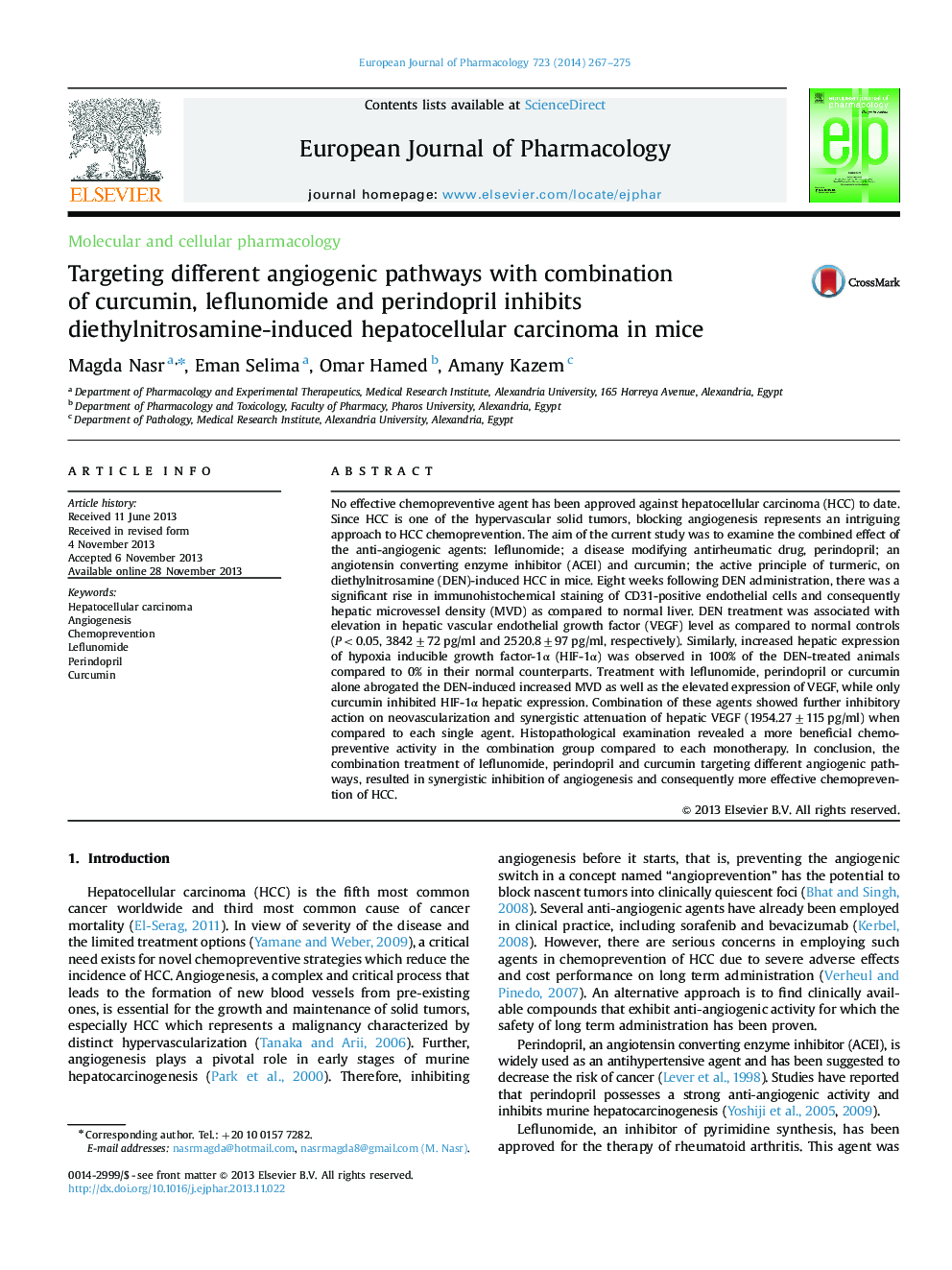| Article ID | Journal | Published Year | Pages | File Type |
|---|---|---|---|---|
| 2531981 | European Journal of Pharmacology | 2014 | 9 Pages |
No effective chemopreventive agent has been approved against hepatocellular carcinoma (HCC) to date. Since HCC is one of the hypervascular solid tumors, blocking angiogenesis represents an intriguing approach to HCC chemoprevention. The aim of the current study was to examine the combined effect of the anti-angiogenic agents: leflunomide; a disease modifying antirheumatic drug, perindopril; an angiotensin converting enzyme inhibitor (ACEI) and curcumin; the active principle of turmeric, on diethylnitrosamine (DEN)-induced HCC in mice. Eight weeks following DEN administration, there was a significant rise in immunohistochemical staining of CD31-positive endothelial cells and consequently hepatic microvessel density (MVD) as compared to normal liver. DEN treatment was associated with elevation in hepatic vascular endothelial growth factor (VEGF) level as compared to normal controls (P<0.05, 3842±72 pg/ml and 2520.8±97 pg/ml, respectively). Similarly, increased hepatic expression of hypoxia inducible growth factor-1α (HIF-1α) was observed in 100% of the DEN-treated animals compared to 0% in their normal counterparts. Treatment with leflunomide, perindopril or curcumin alone abrogated the DEN-induced increased MVD as well as the elevated expression of VEGF, while only curcumin inhibited HIF-1α hepatic expression. Combination of these agents showed further inhibitory action on neovascularization and synergistic attenuation of hepatic VEGF (1954.27±115 pg/ml) when compared to each single agent. Histopathological examination revealed a more beneficial chemopreventive activity in the combination group compared to each monotherapy. In conclusion, the combination treatment of leflunomide, perindopril and curcumin targeting different angiogenic pathways, resulted in synergistic inhibition of angiogenesis and consequently more effective chemoprevention of HCC.
